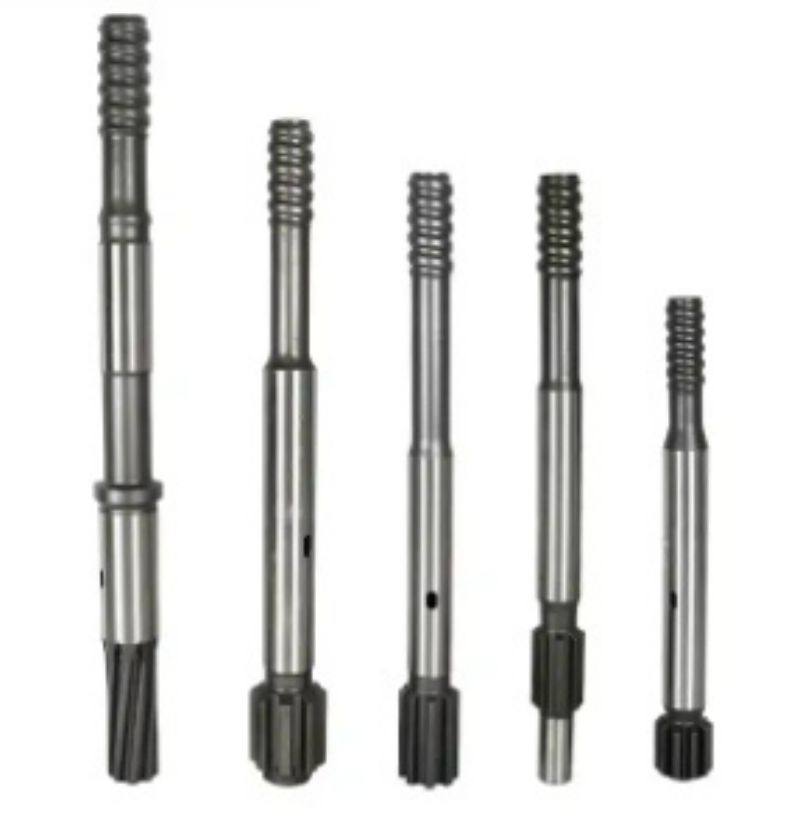The shank adapter is one of the important parts of the hydraulic rock drill. It is connected to the tail of the rock drill and is used to transmit hydraulic energy and drive the rock drilling tool. The material of the shank adapter is usually alloy steel or carbon steel, which has high strength, wear resistance and impact resistance. These materials are able to withstand the high pressure, temperature and impact forces experienced during rock drilling operations,
This ensures the stability and durability of the drill tail. In addition, some drill tails may also undergo surface treatment, such as chromium plating or heat treatment, to improve their surface hardness and corrosion resistance. Different models and brands of hydraulic rock drills may have different shank adapter materials and designs. The specific materials selected should be determined based on the specific work scenario and equipment requirements.
When it comes to drill bits for hydraulic rock drills, the key factors we need to consider are the strength, wear resistance, impact resistance and durability of the material. As a component that connects the tail of the rock drill and the rock drilling tool, the shank adapter must be able to withstand high pressure and temperature, as well as the impact force that may occur during the rock drilling process. Using high-strength alloy steel or carbon steel is a common choice because these materials have excellent strength and stiffness and are able to withstand high pressures and impact forces. They also resist wear and tear, extending the life of the tool handle. Alloy steel is generally more wear-resistant than carbon steel, so choosing an alloy steel shank adapter is a wise choice in work environments that require higher wear resistance.
In addition, some drill tails may also undergo surface treatment, such as chromium plating or heat treatment, to improve their surface hardness and corrosion resistance. This treatment prevents the shank adapter from being damaged by wear, friction and corrosion during rock drilling. Different models and brands of hydraulic rock drills may also have different handle designs. Some drill bits may be threaded to make replacement and repair easier. Other designs may use socket and pin connections to provide greater stability and security.
All in all, the shank adapter of a hydraulic rock drill should have sufficient strength and wear resistance to meet the requirements of the rock drill during its work. At the same time, the design and material selection should also match the specific working environment and application requirements to ensure the performance and durability of the drill tail.
Post time: Nov-24-2023








